We take a look at the current Internet status in Uzbekistan using RIPE NCC data and statistics. This is the start of a series featuring various countries in our service region.
In 2015, we started to organise RIPE NCC Member Lunches in various countries in our service region to allow members to meet with RIPE NCC staff in an informal setting and provide us with direct feedback about our services and tools. These meetings are a also good chance for members to meet with their local colleagues and let us know about the issues they face in their own country.
For each of these member lunches, we prepare an information sheet that shows the current situation of the country as seen from the RIPE NCC: number of LIRs, IPv6 deployment, RIPE Atlas status, etc.
From now on we will publish this information on RIPE Labs - we start with Uzbekistan to coincide with the Member Lunch taking place there on 15 March. Upcoming lunches will take place in Russia, Ireland and Jordan.
Please note that this is a snapshot of the current situation as seen on 13 March 2017. However, in most cases we will also mention a link to the most up-to-date information.
Uzbekistan at a glance
| Number of ASNs assigned | 46 |
| Number of Local Internet Registries | 21 |
| Number of IPv4 allocations | 35 |
| Number of IPv4 assignments | 26 |
| Number of IPv4 addresses allocated | 200,704 |
| Number of /22s allocated from the last /8 | 12 |
| Number of LIRs with IPv6 allocations | 13 |
| Size of IPv6 allocations (/32s) | 48 |
| Number of IPv6 assignments | 1 |
| RPKI with route object authorisation (ROAs) | 2 |
Membership growth
In Figure 1, you can see the growth of the number of Local Internet Registries (LIRs) in Uzbekistan and its neighbouring countries between 2010 and 2017. As of March 2017, there are 21 LIRs registered in Uzbekistan.
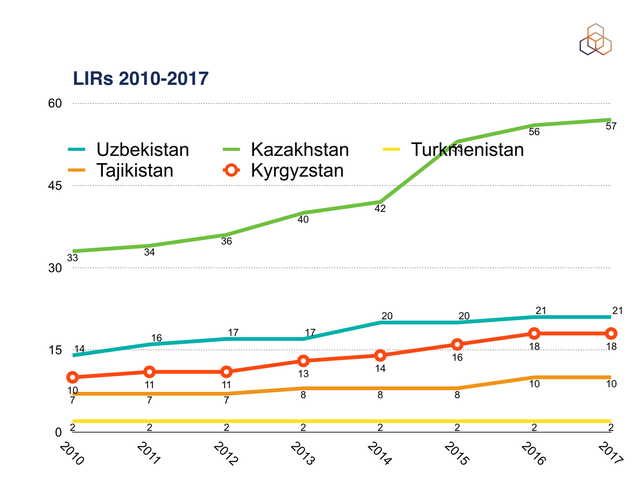
Figure 1: Number of LIRs in Uzbekistan and neighbouring countries from 2010-2017
For comparison, Figure 2 shows the growth in the number of all LIRs registerd with the RIPE NCC since 2008. There are currently over 15,500 LIRs registered with the RIPE NCC. Note that the numbers for 2017 only contain data from January - March 2017.
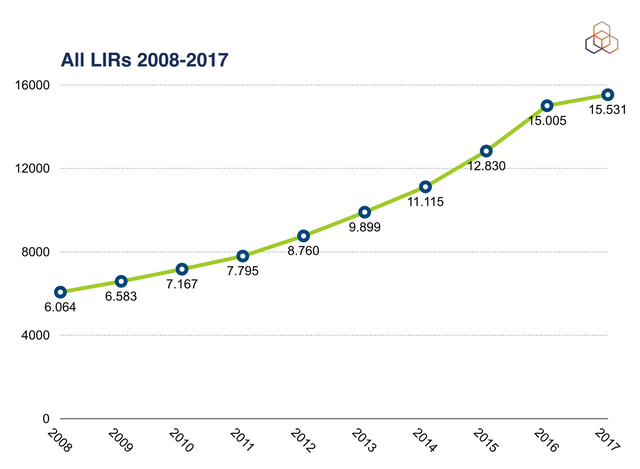
Figure 2: Number of all LIRs in the RIPE NCC service region from 2008-2017
The next figure shows the age of the LIRs in Uzbekistan. You can see that most LIRs (11) are well-established and were set up more than ten years ago.
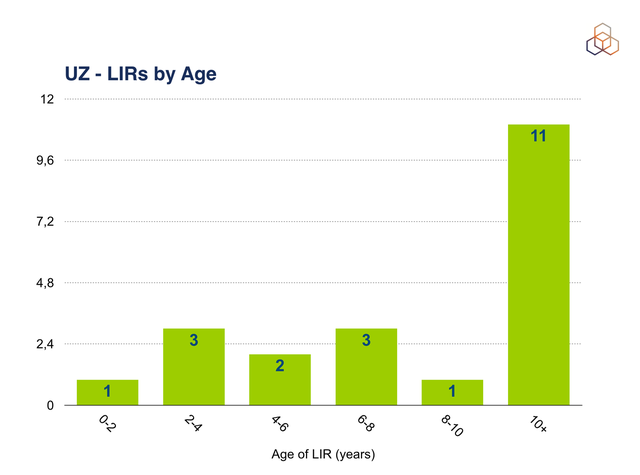
Figure 3: Age of LIRs in Usbekistan
IPv6 Deployment in Uzbekistan
IPv6 RIPEness is a rating system that awards stars to LIRs in the RIPE NCC service region depending on indicators of IPv6 preparedness. Stars are awarded for:
- Having an IPv6 allocation or assignment from the RIPE NCC
- Making the IPv6 prefix visibility in the Routing Information Service (RIS)
- Having a route6 object registered in the RIPE Database
- Having reverse DNS delegation set up for the IPv6 allocation
Figure 4 shows the situation in Uzbekistan. You can see that 13 LIRs (62% of all LIRs in the country) have an IPv6 allocation and nine of those LIRs have done something with that allocation. And 38% (or 8 LIRs) don't have an IPv6 allocation yet.

Figure 4: IPv6 RIPEness in Usbekistan
In Figure 5, you can see the situation for all LIRs in the RIPE NCC service region. 75% of all LIRs have an IPv6 allocation, of which around 40% have started using it one way or another (by meeting one of the criteria listed above).
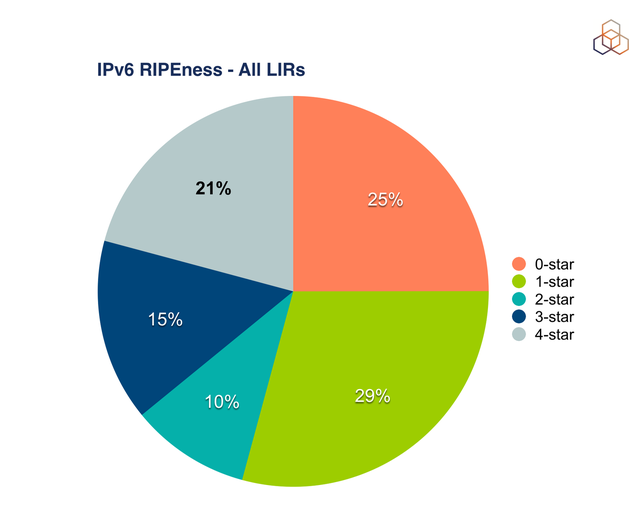
Figure 5: IPv6 RIPEness for all LIRs
In Figure 6, we show the number of ASes announcing one or more IPv6 prefixes in Central Asian countries. In Uzbekistan, only one AS anounces IPv6 to the global routing table. You can find the current status of these countries at IPv6-ASNs-in-Central-Asia. This tool also allows you to search for other countries or regions worldwide.
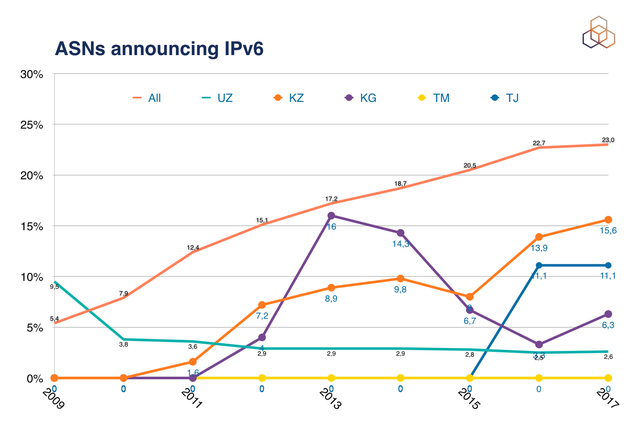
Figure 6: ASes announcing one or more IPv6 prefixes in Uzbekistan and neighbouring countries
Country Routing Statistics
Figure 7 visualises the development of the IPv4 and IPv6 prefixes and ASes in Uzbekistan over time.
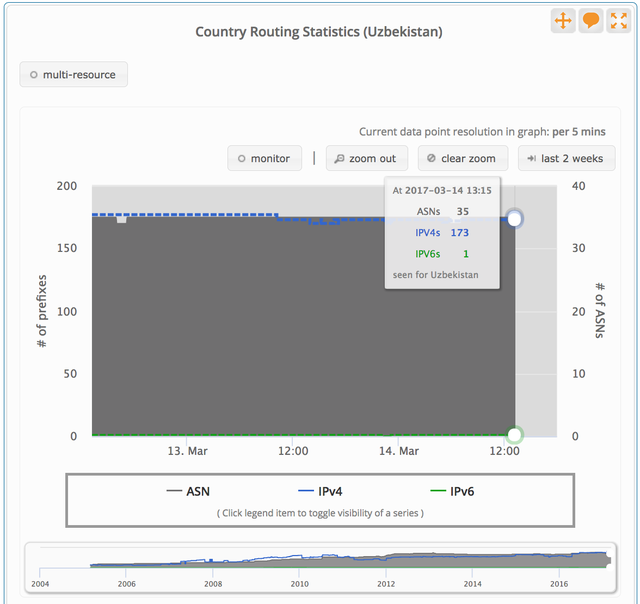
Figure 7: RIPEstat country routing statistics in Uzbekistan
You will notice that the number of IPv6 prefixes and the number of ASNs in this widget are not consistent with the number shown in the table above. The table shows those allocations and assignments made by the RIPE NCC to organisations registered in Uzbekistan. The RIPEstat widget on the other hand shows what's actually happening in the real world: The 35 IPv4 allocations made by the RIPE NCC have been de-aggregated into 173 individual prefixes that are announced by 35 ASes (instead of the 46 ASes assigned by the RIPE NCC to organisations in Uzbekistan).
You can see the current status in the RIPEstat country routing widget. You can also use that widget to compare multiple countries.
RIPE Atlas
RIPE Atlas is a global network of probes that measure Internet connectivity and reachability, providing an unprecedented understanding of the state of the Internet in real time. The more probes that are distributed and connected worldwide, the more useful data can be collected that can then be used by network operators and researchers to analyse the state of the Internet.
The embedded RIPEstat widget below shows the number of RIPE Atlas probes in the region. Green dots indicate connected probes, yellow dots show disconnected probes and red dots indicate those that are abandoned (i.e., not connected for more than three months).
If you have a RIPE Atlas probe, please double-check it is connected properly so that the community can benefit from the data it produces.
RIPEstat widget will be rendered here
Figure 8 shows the actual number of RIPE Atlas probes in Central Asia.
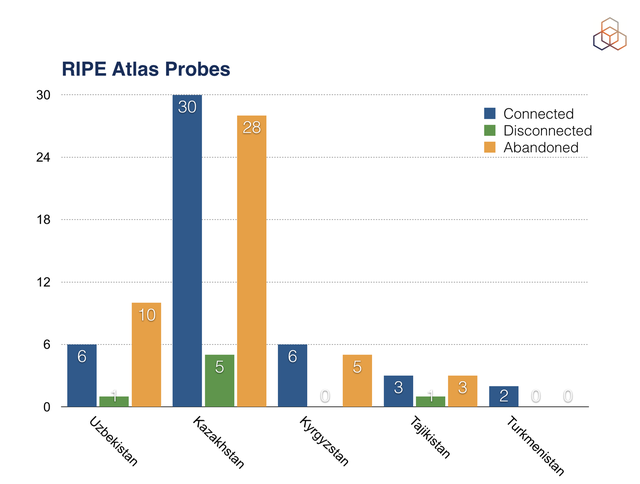
Figure 8: Number of RIPE Atlas probes in Uzbekistan and neighbouring countries
Conclusion
As we add more more country-based analysis in the months to come, we will talk to members and see what data is interesting for them and see if we can add further information. Where appropriate, we may add General Meeting registration information, or even country-specific data from the RIPE NCC Survey 2016. Where possible we will also add comparisons with neighbouring countries and the region as a whole.
If there is other information you'd like to see, please let us know in the comments below.

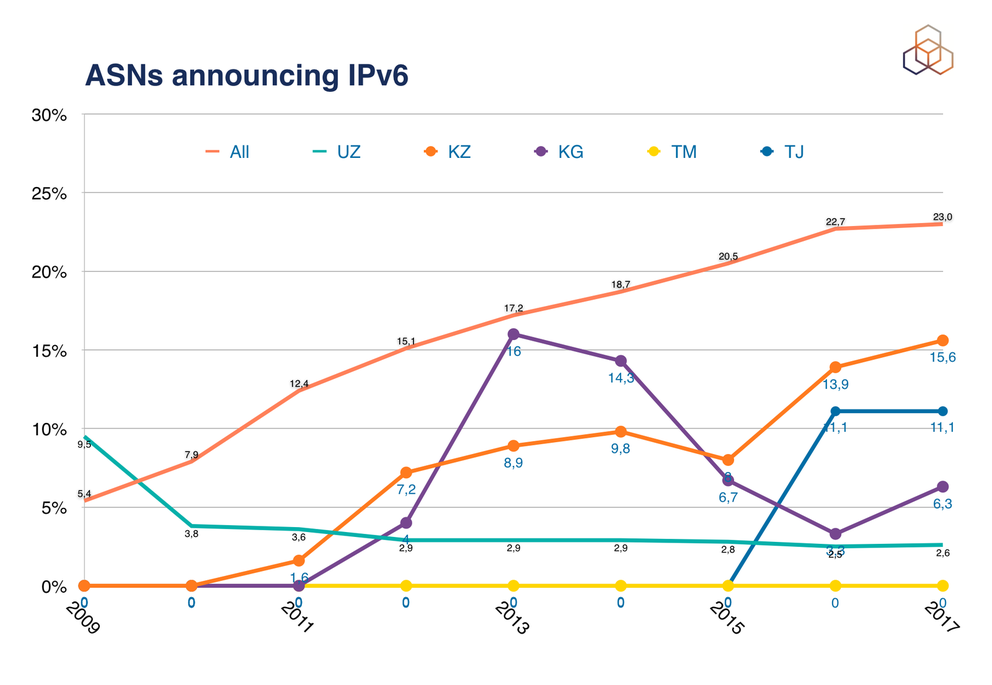
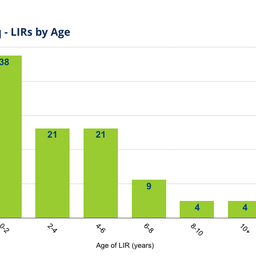
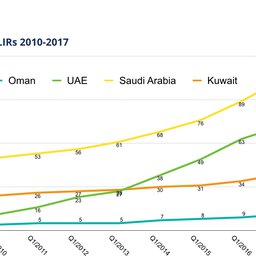
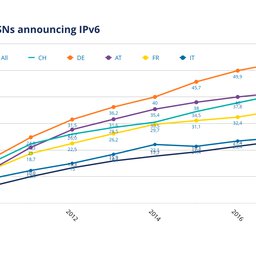
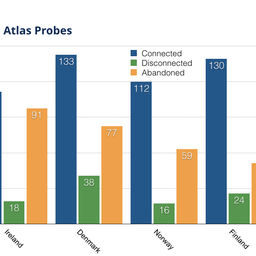
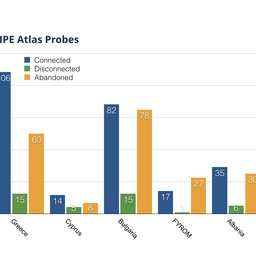
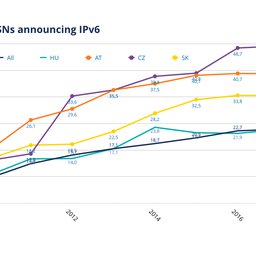
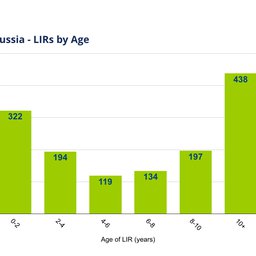



Comments 0
The comments section is closed for articles published more than a year ago. If you'd like to inform us of any issues, please contact us.